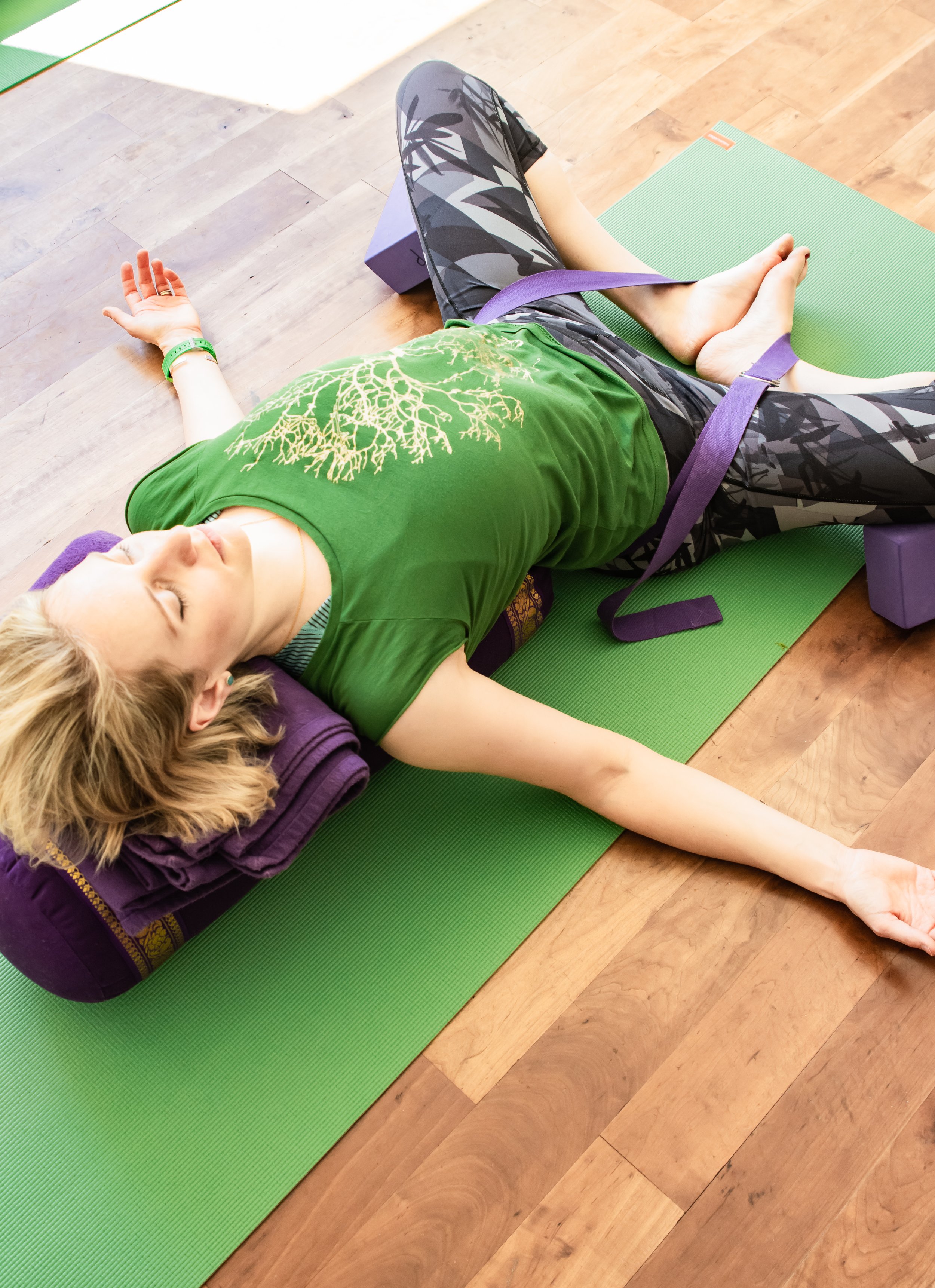Why A Restorative Yoga Practice Is ALWAYS A Good Choice
I’ve written before about the importance of rest, but as we head into the winter months after a long period of uncertainty, this has never been more important.

Speaking to several students over the past few months, it feels as if things are very busy for many of us.
This isn’t surprising, as this is the first time in a while that we have been ‘back to normal’, while at the same time, living in a country that currently has the highest rates of Covid in Europe. This is on top of the usual coughs, colds and seasonal bugs that are starting to do the rounds.
The beauty of Iyengar yoga, and having a yoga practice, is that our practice can be a perfect fit. It can change according to your mood, the season, the time of day, your energy levels and so on.
And interestingly I have been choosing a predominantly restorative practice for the last few weeks.
A Bit More about Restorative Yoga
BKS Iyengar is credited with having ‘invented’ restorative yoga as a concept. Due to the ill-health he suffered in his formative years, Iyengar had to fashion props from bits of wood or everyday objects in order to get into yoga poses. His inventive use of props meant that the benefits of poses could be felt without over-straining the body.
Restorative yoga is about allowing the pose to do you, rather than you doing the pose. You have to allow the body to inhabit the pose, and then let the breath inhabit the body, and the mind inhabits the breath. When you become fully passive in the pose there is a sense of weightlessness and submersion in the pose.
Why Restorative Yoga isn’t Resting Yoga (necessarily)
The name restorative can be misleading however. Some students get overexcited when the bolsters come out, but restorative yoga doesn’t necessarily mean it’s going to be resting.
Restorative yoga is about restoring the natural balance of the body, physically, emotionally, and hormonally. Sometimes this is done through supported backbends, long holds of inverted poses and other things that can feel distinctly UNRESTFUL while you’re doing them.
This is because yoga emphasises the need for relaxation, but it goes further and advocates rejuvenation. Relaxation is going from a negative to a neutral state, while rejuvenation is going from a neutral to a positive state.
Why Inverted Asanas are Especially Important
All restorative yoga poses have their benefits, but inverted restorative poses are particularly important for a stressed-out nervous system and for mental and emotional health.
Any pose where the head is positioned below the heart counts as an inverted pose, so you don’t have to be up in full headstand or shoulderstand. Also standing inversions, such as Uttanasana and Adho mukha svanasana with the head supported (preferably on something soft) give the same benefits.
Focusing on Relaxing the Eyes
We can feel tired after a whole day spent working on the computer, but it’s brain-tired. Our eyes are pushed forwards from looking at the screen, and we haven’t been breathing properly so the body is not fully oxygenated.
With so much of our lives now conducted on screens – Zoom meetings, online yoga, WhatsApp chats, and so on, we need to find a way to take a break from all the screen-related activities.
Yoga gives us this time to rest our eyes. Here’s a simple exercise you can try: take a bandage and softly cover the eyes. Lie in supported savasana and allow the eyes to completely soften. Focus on the breath.
In any yoga pose, it’s important to check on what’s happening with the eyes, especially strenuous poses such as backbends. We need to learn to soften the face, even while working the rest of the body – this eventually leads to the ‘effortless effort’ of Patanjali’s sutras.
[……]
